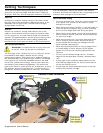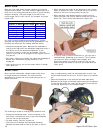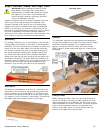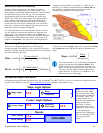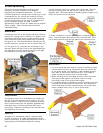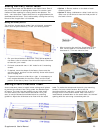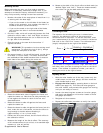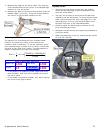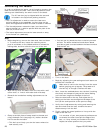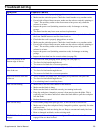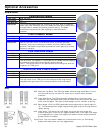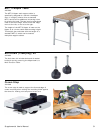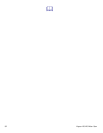
30 Kapex KS120 Miter Saw
Optional Accessories
Sawblades
Combination Blade
Tooth Type ATB, 60 teeth
Hook Angle -5°
Item Number 494 604
Description This is the standard blade that comes with the saw. With a moderate
tooth count and ATB tooth grind, this blade provides good results when
a single blade is needed for general purpose cutting. The blade
incorporates asymmetrical tooth spacing to reduce harmonic
vibration.
Fine Crosscut Blade
Tooth Type ATB, 80 teeth
Hook Angle -5°
Item Number 494 605
Description
With a high tooth count and ATB tooth grind, this blade provides
excellent, chip-free crosscutting of lumber and fine (cabinet-grade)
plywood. The blade incorporates asymmetrical tooth spacing to reduce
harmonic vibration.
Fine Laminate Blade
Tooth Type Flat-tipped ATB, 64 teeth
Hook Angle -5°
Item Number 494 606
Description
The ultra-hard, flat-tipped (FT) ATB teeth on this blade reduces chipping
of laminates and solid surface materials without dulling.
The FT- ATB grind results in the performance of an ATB grind, with the
longevity of a TCG grind.
Aluminum and Plastic Blade
Tooth Type TCG, 68 teeth
Hook Angle -5°
Item Number 494 607
Description
The high tooth count, TCG grind of this blade provides long lasting
sharpness and good control for cutting aluminum and hard plastic.
Notes
ATB: Alternate Top Bevel. The ATB type blade slices through wood fibers, first on
one side and then on the other for clean cuts in natural and manmade
materials.
TCG: Triple Chip Grind. The TCG type blade is designed to cut through hard
materials. The trapezoidal tooth cuts the center of the kerf and the flat raker
tooth cuts the edges. This type of blade design is more resistant to dulling.
26-a Bevel Angle: All of the ATB-type blades shown above have a bevel angle of
15°. This moderate bevel angle helps provide good chip-free cutting without
rapidly dulling.
26-b Hook Angle: The higher the hook angle, the more the tooth grabs the
material and pulls it into the cut. Ripping blades have a very high hook angle
to cut aggressively. Lower hook angles are used for harder materials where
greater control is needed.
Tooth Count: The more teeth a blade has, the smoother it will cut. Conversely,
blades with fewer teeth cut more aggressively.



